The Thawing Arctic Threatens An Environmental Catastrophe
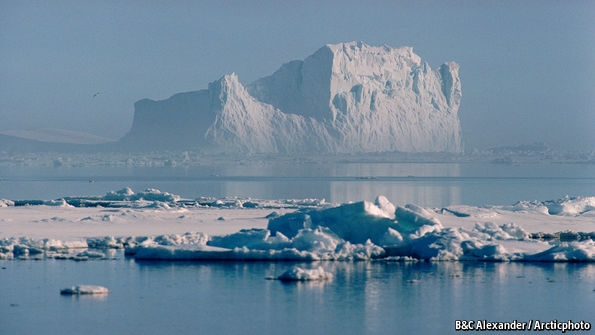
Source: The Economist
Commercial opportunities are vastly outweighed by damage to the climate
“DUE to the global warming, please keep the Snowhotel door closed” reads a sign at the entrance to what appears to be a giant white mound near Kirkenes, close to Norway’s Arctic border with Russia. The owners want to preserve the frozen friezes of unicorns, reindeer and butterflies that adorn its walls. Patches of translucence in the ceilings of the hotel’s 25 icy rooms suggest the warmth outside is winning. Artificial snow helps build the structure anew each November and it usually disappears before May. The season has shortened in recent years, says one employee; the cold comes later than before.
The Snowhotel’s lengthening off-season is a small sign of an immense transformation in the Arctic, where the environment is changing more rapidly than in the rest of the world. Little can be done to keep its white wastes intact. A great thaw is inevitable as the climate responds to an accumulation of carbon emissions in the atmosphere. International efforts to limit global warming will at best slow the changes, perhaps making the consequences merely terrible rather than catastrophic.
“The Paris agreement will not save the Arctic as it is today,” says Lars-Otto Reiersen, executive secretary of the group behind the latest edition of “Snow, Water, Ice, Permafrost in the Arctic” (SWIPA), a report produced under the auspices of the Arctic Council, a scientific-policy club for the eight countries with territory in the Arctic Circle), as well as observers including China and India.
Atmospheric concentration of carbon dioxide has now reached 400 parts per million (ppm), up from 280ppm three centuries ago; the Earth is on average 1ºC hotter than in pre-industrial times. Although 190-odd countries signed up to limit warming to “well below” 2ºC above pre-industrial temperatures in Paris in 2015, pledges for mitigating action are likely to see temperatures increase by around 3ºC—assuming countries stick to their promises. But different parts of the world warm at different rates. Even if the Paris agreement is implemented in full, the Arctic will warm by between 5ºC and 9ºC above the 1986-2005 average over the Arctic ocean in winter.
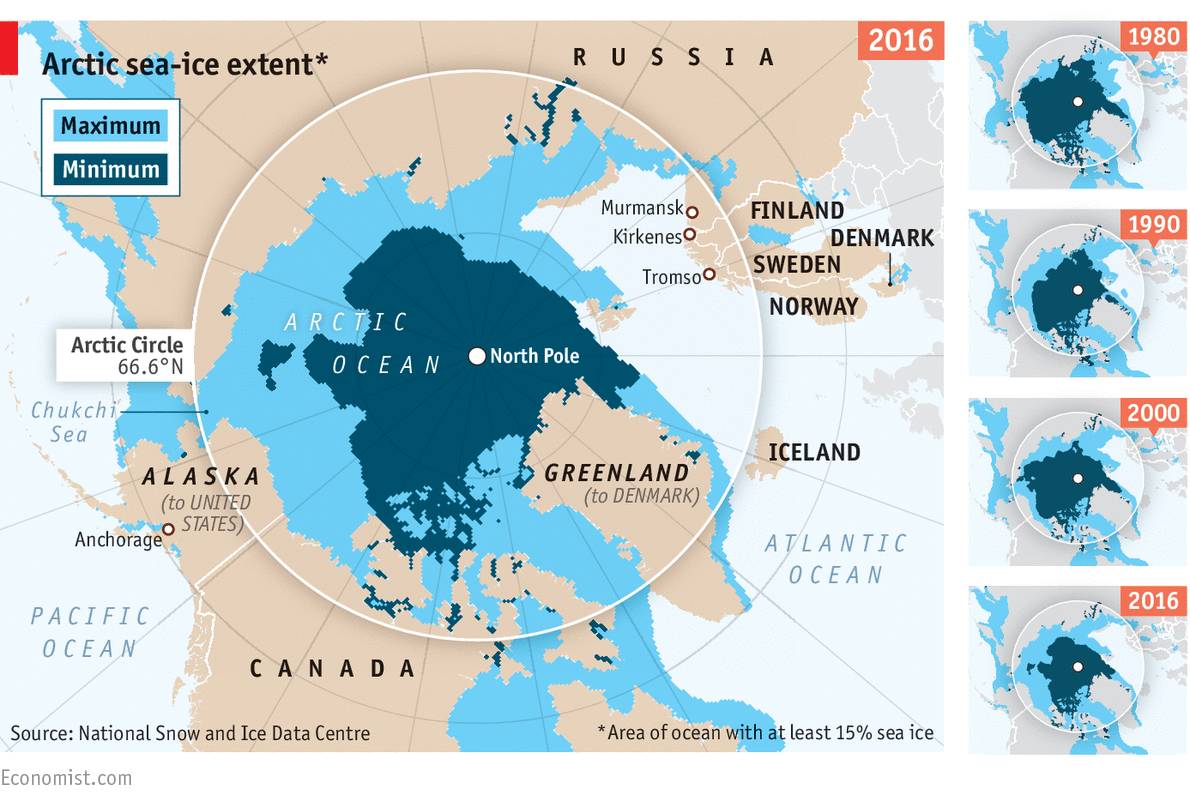
The thaw is happening far faster than once expected. Over the past three decades the area of sea ice in the Arctic has fallen by more than half and its volume has plummeted by three-quarters (see map). SWIPA estimates that the Arctic will be free of sea ice in the summer by 2040. Scientists previously suggested this would not occur until 2070. The thickness of ice in the central Arctic ocean declined by 65% between 1975 and 2012; record lows in the maximum extent of Arctic sea ice occurred in March.

The most worrying changes are happening in Greenland, which lost an average of 375bn tonnes of ice per year between 2011 and 2014—almost twice the rate at which it disappeared between 2003 and 2008 (see chart). This is the equivalent of over 400 massive icebergs measuring 1km on each side disappearing each year. The shrinkage is all the more perturbing because its dynamics are not well understood. Working out what is going on in, around and underneath a supposedly frigid ice sheet is crucial to understanding how it will respond to further warming and the implications of its demise for rising global sea levels (see article).
Cold, hard facts
The Arctic has been warming at twice the rate of the rest of the world for decades because of feedback loops that have reduced the albedo effect, a measure of the way Earth reflects heat. Unlike the rest of the planet the polar regions release more heat into space than they absorb, in effect cooling the planet, because sunlight is reflected by ice and snow. When it is replaced by water or dark ground, more heat is retained. That is precisely what is happening in the Arctic’s defrosting landscape.
At sea, much Arctic ice once lingered throughout one year and into the next. In 1985 about 45% of ice was older (and thus thicker) but by 2016 that amount had fallen by half. Huge expanses of ice now melt and refreeze over the year. Older ice tends to be jagged. When it melts, pools form between tough ridges, allowing some heat to reflect. Newly formed ice lets meltwater spread more evenly across its glassy surface. This reduces reflectivity still further.
As the land in the Arctic warms and once permanently frozen ground unfreezes, greenhouse gases are released. The dead plants and animals in Arctic permafrost hold about half the world’s carbon stored in soil. As this organic matter thaws it decays, releasing carbon dioxide and methane, another powerful greenhouse gas, and insulating the planet still further. Unfrozen tundra is also tinder for fires. Shorter snowy periods mean fire seasons will lengthen. In Alaska and parts of America’s West, the average length of the fire season has already jumped from 50 days in the 1970s to 125 now.
Changes in the environment are affecting the numbers and types of creatures that can live there, too. Arctic waters are increasingly full of life. The edge of the ice shelf is a feast for many species due to ice algae and phytoplankton that appear there at the end of winter. But decreasing ice may lead to mismatches between the timing of reproductive cycles in creatures such as shrimp and the availability of plankton. As water warms, larvae hatch earlier. Any impact on the populations of tiny crustaceans will affect other creatures higher up the food chain—cod, seals and polar bears—which need fat sources in their diet.
At the same time, new mouths are coming to feed. Zooplankton from southerly waters have moved north at a rate of 200km a decade as the ocean has warmed. Bigger fish have followed their dinner northward. This sounds like welcome news for hardy fishermen. But it is unclear whether the Arctic can sustain the new arrivals. They will compete with, and perhaps eat, specialised species dependent on the ice shelf’s edge for food.
Some experts also argue that fresh water from melting ice in the Barents Sea will curb the growth of the nutrients its inhabitants need. “It is all extremely uncertain, and depends on ocean-circulation patterns,” says Michaela Aschan, a fisheries professor from the University of Tromso.
Amid all this bad news about the state of the Arctic, the business opportunities associated with warming were supposed to cheer at least a few. The Arctic is an ocean covered in ice, ringed by land (whereas the Antarctic is a lump of land covered in ice, ringed by ocean). The eight Arctic countries have interests in shipping, fishing and drilling in the region. But finding profits amid the thaw is tough. Prospects look bleaker in many industries than they did five years ago as the risks are better understood.
The Arctic contains more than a fifth of the world’s untapped hydrocarbon resources. But in the North American Arctic offshore drilling was banned in December almost everywhere to protect ecosystems (although Donald Trump may reverse the moratorium). Elsewhere, low prices and the difficulties of operating in the Arctic’s dangerous waters now repel big firms attracted to the region back when oil fetched over $100 a barrel.
In a stunning about-turn, Shell ended operations in the Chukchi Sea in 2015 after spending $7bn on exploration there. It says it did not find enough oil to justify continuing. Russian firms, such as Rosneft, are proving hardier. They have fewer opportunities to invest elsewhere, after all, and Russia needs the money. Low oil prices have taken a toll on an economy which relies on the Arctic for a fifth of GDP and a fifth of exports.
The shipping industry is another for which Arctic promise has drifted away. In theory shipping firms should benefit from access to a more open seaway. Using it to sail from northern Europe to north-east Asia can cut the length of voyages by two-fifths compared with travelling via the Suez Canal. But an expected shipping boom has not materialised. In 2012 only 1m tonnes of goods were shipped through the northern passage, a paltry level of activity yet one not achieved since.

Even in the summer months the Arctic ocean is stormy, making timely delivery of goods impossible to guarantee. Drifting ice also poses a danger. Ships must be strengthened to withstand it, adding to construction costs. And a lack of coastal infrastructure, such as deepwater ports, means that spills of the heavy fuel oil that powers most vessels could wreak havoc on both ecosystems and reputations, because clean-up missions would have to set out from much farther away and would take much longer to be effective.
Breaking the ice
A new Polar Code from the International Maritime Organisation, which regulates shipping, came into force at the beginning of the year to try to address some of these concerns. It bans sewage discharges in polar waters and ones of oily mixtures. America and Canada, among others, want to go further. For one thing, they want a ban on heavy fuel-oil (as there is in the Antarctic, which has various special protections).
Mining firms, interested in metals such as copper, are eyeing up the Arctic. But most firms do not have the experience to negotiate with indigenous groups over projects on their land (about one in ten people in the region is from such a group). And many of the inhabitants oppose development anyway. In Norway the Sami parliament, which represents Sami people from across the country, is wary. Jon Petter Gintal, who deals with international affairs at the parliament, says blighting the landscape would be foolish. Tourists, keen to see rugged natural beauty, may sustain the Arctic economy in future decades as traditional livelihoods, such a reindeer herding, prove harder to maintain.
Even if outsiders’ commercial interest in the Arctic is cooling the region’s population of around 4m people has little choice but to adapt to the changing climate. Northern Norway is the most densely populated area but Russia, which accounts for half of the Arctic coastline and has a fleet of nuclear submarines based at Murmansk, is the country keenest to extend its influence. Russia eventually wants ten new search-and-rescue stations along its shoreline. Five are open already. Russia is also aiming to boost its military presence by reopening Soviet military bases.
Despite tensions over Russian belligerence elsewhere in the world, its aspirations in the north have so far given little cause for concern. Locals in Kirkenes laugh about their neighbours: “They come across here all the time to shop. They like the nappies, they say they are better quality,” explains one businessman. Oystein Bo, Norway’s defence minister, is more guarded: “Russia is as interested as we are at keeping the Arctic a region of stability,” he says. But if Russia decides to wield its power more forcefully this will only add to the problems in the Arctic.
Nothing, however, looms larger than the potential for environmental calamity. The question of thawing is rising up the list of priorities both of countries with territory in the region and those farther afield. Sticking to the Paris agreement could, eventually, stabilise temperatures. But more radical measures may be needed given that countries are unlikely to keep within the limits set in Paris.
A change in the weather
One possibility for cooling the pole is geoengineering, the deliberate modification of the climate to reduce warming. Pumping sulphate aerosols into the Arctic stratosphere from high-flying aircraft could be one way to blot out a bit of the sun. Such an approach would cool Arctic summers but have little effect in winter because there would be no sunlight to reflect. Injecting salt crystals into clouds over the Arctic ocean, to enhance their reflectivity, might also encourage some cooling, though the helpfulness of this type of intervention is highly speculative.
Either way the gap between theory and practice is enormous and ethically fraught. Even if such ways to cool the planet could be managed on the vast scale necessary, other unwelcome outcomes cannot be discounted. When volcanoes release vast amounts of aerosols and sulphates into the air, they damage the ozone layer—might the same be true for geoengineering? If polar ice returned thanks to judicious management of solar radiation, water and weather cycles in the tropics might be altered if sulphates were released in just one hemisphere. And the ocean’s chemistry would continue to change as concentrations of greenhouse gases in the atmosphere rise. If they ever happen at all, negotiations over large-scale geoengineering would be long and arduous.
Climate change has at least brought the Arctic fresh attention from world leaders. Xi Jinping, China’s president, stopped in nearby Anchorage on his recent return from America. Barack Obama became the first sitting American president to visit the Arctic. In May a ministerial meeting of the Arctic Council, at which America will hand over the chairmanship to Finland for its two-year stint, offers an opportunity for Rex Tillerson, America’s secretary of state, to set the new administration’s policy for the region. To ensure political and commercial stability in a defrosting Arctic, and to limit the harm caused by and to the warming pole, countries need to pay it far greater attention. The danger is that it is already too late.
Source: The Economist






















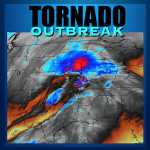
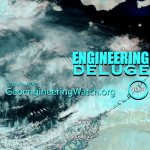

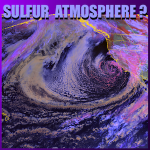
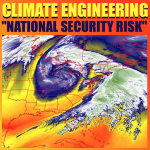
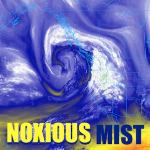












































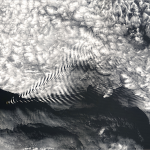
















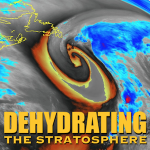
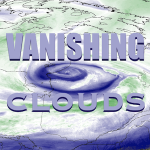






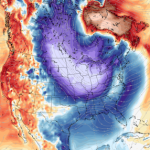









































Leave a Reply